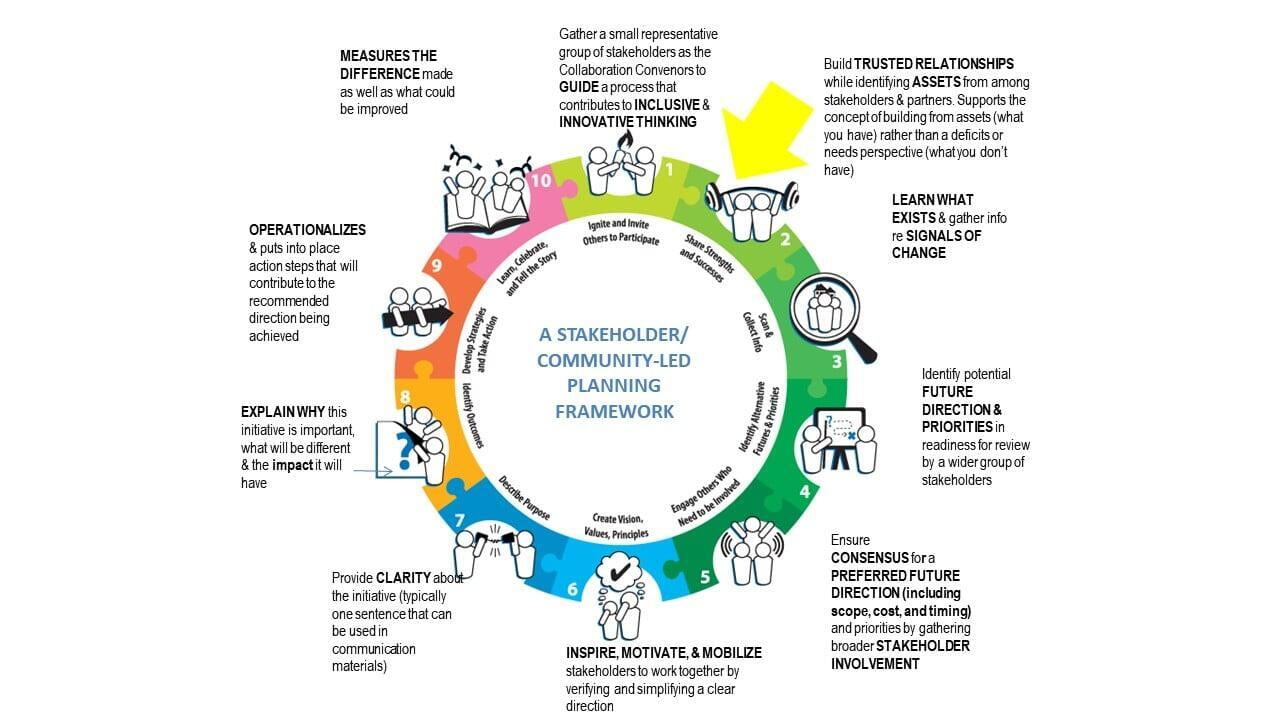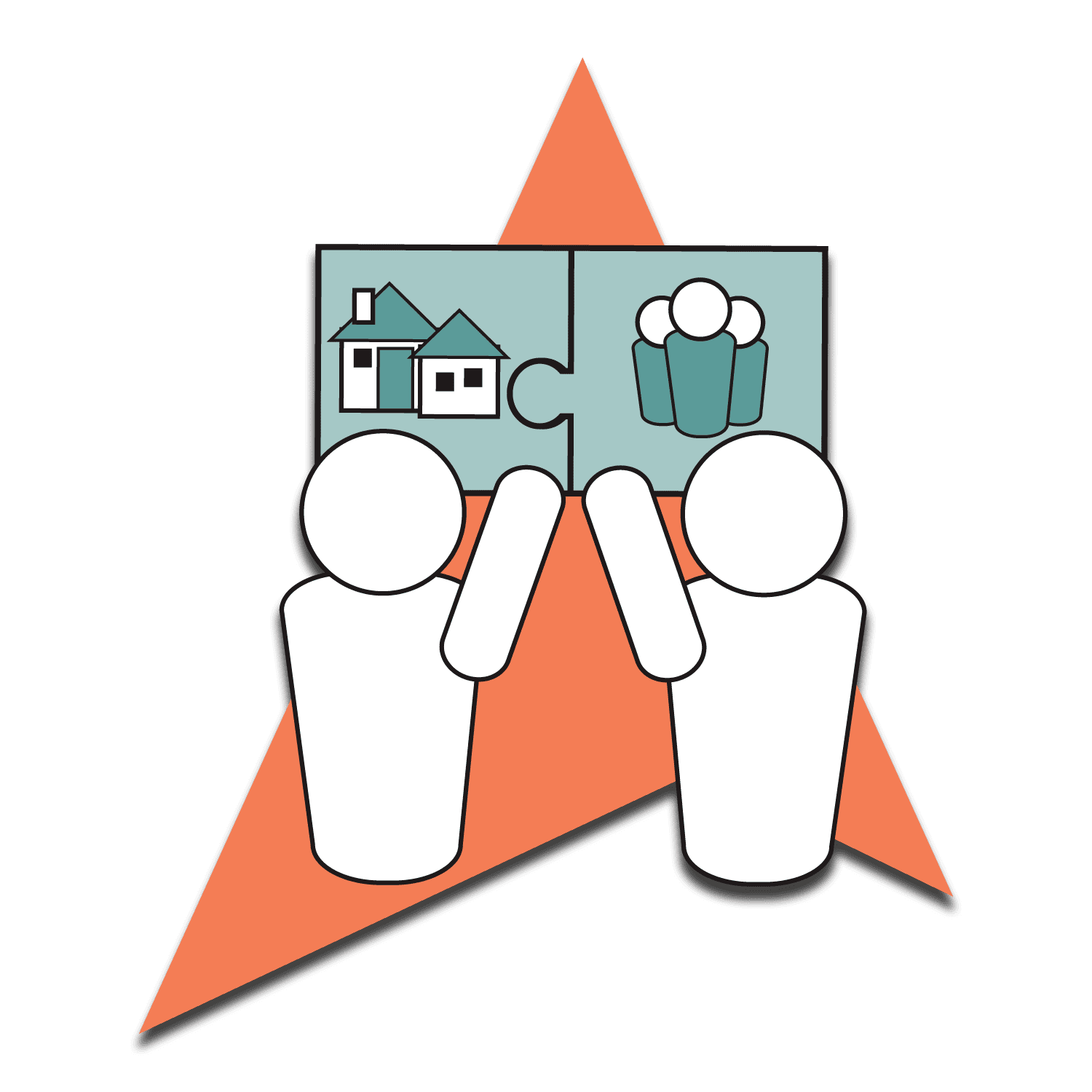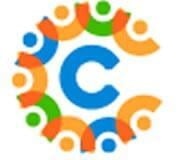Step 2 Share Strengths and Successes


Planning for Step Two
Rather than building from the traditional ‘lack or needs’ perspective, an asset-based approach emphasizing strengths and successes will instead recognize the valuable strengths each individual, organization, or business could potentially contribute.By doing so, it suggests the solutions likely exist within the community of stakeholders and are not necessarily reliant on outside experts. This emphasis on assets means planning is initiated from a positive perspective. As such, it empowers participants, builds trust and relationships and, perhaps more importantly, reinforces the concept that the 'wisdom is within'. What could this process look like? How can you encourage others to work from an ‘assets’ (rather than a ‘needs’ perspective) to view the glass as being half-full instead of half-empty? What facilitative tools or techniques could your team of Collaboration Convenors use to ensure an asset-based approach is applied from the onset? This step involves gathering information from the Collaboration Convenors as well as other stakeholders. |
Note: This step could be incorporated into either the first or second meeting of the Collaboration Cohort. However, it is also important to note that it models a process that should be used when there’s a readiness to engage a broader group of stakeholders (see step 5).
Tools for Sharing Strengths and Successes
We empower communities by supporting capacity for a whole-community, sector-connected approach to social, economic, and environmental well-being.

Individual and organizational future-readiness is supported increasing capacity for (1) community and stakeholder-led development, (2) systems-practices, (3) strategic foresight, and (4) digital optimization. We've learned these four components are necessary for the project and systems collaboration and informed decision-making we have experienced as being essential for transformative change and innovation.

Innovative projects require being bold, perseverance, tenacity and a sprinkle of panic.
-- Michelle Baldwin

Many situations in life are similar to going on a hike: the view changes once you start walking. You don't need all the answers right now. New paths will reveal themselves if you have the courage to get started.
--James Clear

Leadership today is about courage. Courage to realize our challenges are complex and no one individual, organization, or sector can resolve them on their own. That means we have to let go of the idea that we alone have the answers. Instead, we need to strengthen our individual and organizational competencies in order to become sector connectors who call meetings before we have the answers, aren't intimidated by messy, and can ensure a culture where all voices are heard. Only then, can our collective gifts, experience, and wisdom be focused on building a better future for all.
--Brenda Herchmer

In times of change it is the learners who inherit the future. Those who have finished learning find themselves equipped to live in a world that no longer exists.
-- Eric Hoffer

